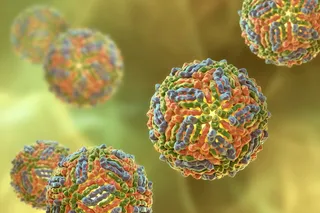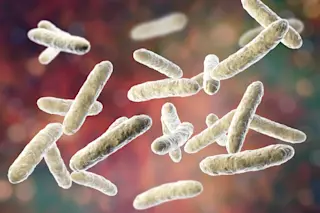Somewhere in the world within the next five years, terrorists are likely to use a biological agent like anthrax or Ebola in a major attack, a new congressional report predicts. The report
acknowledges that terrorist groups still lack the needed scientific and technical ability to make weapons out of pathogens.... But it warns that gap can be easily overcome, if terrorists find scientists willing to share or sell their know-how. "The United States should be less concerned that terrorists will become biologists and far more concerned that biologists will become terrorists," the report states [AP].
The report, which will be officially released on Wednesday by the Commission on the Prevention of Weapons of Mass Destruction and Terrorism, covers the threat of both biological and nuclear attacks. It argues that bioterrorism is a greater threat: Nuclear facilities are closely guarded, the report says, while many civilian labs contain dangerous pathogens and ...













